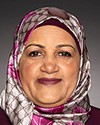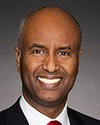Perhaps I can respond to some of the points. I'll just give you a few to situate the caregiver program.
The department is currently very much on target to meet its 2017 targets, which will be 18,000 caregivers landed this year. Closing inventory at 2016 was 31,000 persons. That's down from 57,000 at the end of 2014, so that represents a 46% reduction already. The processing times are very high, but that's because we're processing very old cases. Inevitably, as they've been sitting there that long, the processing times are very long. In 2018 we expect to see a major drop in the applications. In fact for those submitted to us from 2015 onwards, the processing time is down to 12 months.
The minister also referred to the new programs that are in place with three-month landing. Eligible applicants in the larger live-in caregiver program inventory can indeed apply under the new program if they qualify, in which case their processing would be quite quick.





